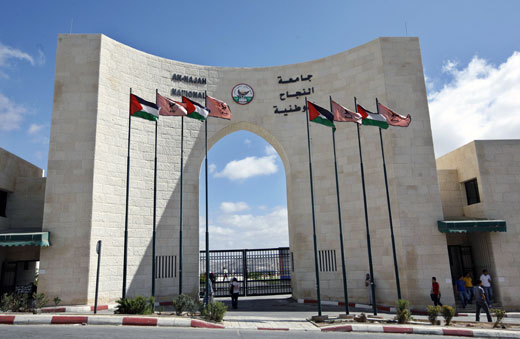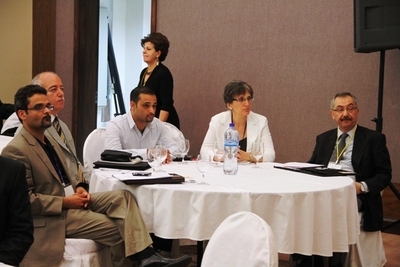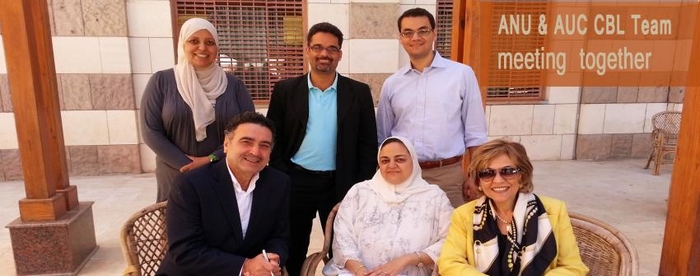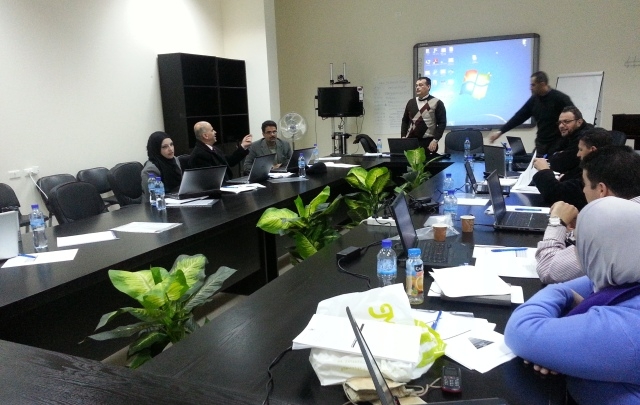An-Najah National University Establishes the Outlines of Community Learning as an Entrance for Training and a Modern Philosophy for Teaching
An-Najah National University in Palestine is witnessing a high-profile technological, medical, and research renaissance, as it keeps up with the latest scientific developments on an international level.

The University is also constantly dispatching its students and teachers to the finest universities in the world to finish their higher education and re-designing the elements of the educational process in a way that keeps up with the development of quality, in order to reach the highest international level of education quality and achieve its strategic vision for the year 2015.

Just recently, the University was named the best educational institution in Palestine, and was uniquely awarded the International Review of the European Excellence (EFQM); and it also voluntarily requested the evaluation of its performance by the Union of the United Nations Universities’ institutional evaluation program (IEP), which in turn praised the quality and transparency of An-Najah’s educational process. The University also received first place in research production according to the statistics of the international database Research Gate, and it is very close to obtaining the international standards for engineering and technological education quality (APET).

To follow up with its modern vision of education, and in a nod to the development of Palestinian education, the University is to start a new teaching philosophy, complete with a new training program in the beginning of the second semester of the academic year of 2013/2014, known as Community Education (education based on linking with the community) and which places students in the work environment as part of the teaching process. In this way, the practical aspect can compliment, not substitute, the theoretical one, and so doing, move from the traditional learning method to a method where students themselves are the heart of the educational process.
The story started with an initiative from the University’s Center for Excellence in Learning and Teaching (CELT), which had the aim of integrating new methods of teaching to the educational system of the University - and that was exactly what happened, as the center attained a project via Palestinian Faculty Staff Development Program (PFDP), and immediately started forming a specialized staff from the University to train the faculty on the methodologies of course design, intended learning outcomes (ILOs) ,the mechanism of finding a community partner , and the modern methods of evaluating courses.

To reinforce that very same initiative, a delegation of the University professors, chaired by CELT Director Dr. Abdelkareem Daraghmeh, headed to the American University in Cairo, where they were introduced to that university’s pioneer experience in the field of community learning , which started about 10 years ago. Thanks to a memorandum of understanding with An-Najah, the aforementioned university is to help establish the program of community learning, start with courses from the program, and facilitate the training for two years.
Dr. Abdelkareem Daraghmeh said that “[b]y establishing the community learning program, we are conforming to a high strategic objective, which is within the University’ s strategic plan of serving the community and contributing to its social and economic renaissance.” He added that “in the courses of community learning, we are looking for partners from the local community to try to meet their needs, and by doing that, we are offering the students real cases and projects on which they can apply their theoretical courses, and are also serving the local community.”
On a different aspect, Dr. Daraghmeh emphasized that “[t]he philosophy of community learning reinforces the students’ personality and presence, and increases their ability to communicate and generate ideas, which means that they will be ready for the work market,” noting that the projects which the students produce during the semester –as an output of the course- are open to be used by the partners for free.
On the same subject, Dr. Emad Dawwas, the coordinator of the Community Learning program in the University, indicated that “[t]he philosophy of the educational process of community learning is based on mutual utility between the academic institution, represented by the student and the teacher on one side, and the community on another. “ He elaborated by saying that “[t]he students benefit from being in contact with the community and being introduced to the problems which it faces, as that helps them diagnose these problems and identify the factors which affect them . As for the community, the benefit is in obtaining a potentially high–cost service for free, performed by experts, which is something it might sometimes lack.”
It must be mentioned that the University faculty members spent seven months of continuous preparation and training, with the support of trainers specialized in community service. This resulted in 10 educational courses worth 3 credit hours, ready for the second semester in different majors, such as information technology, medicine, education, languages, engineering, and media. These courses were re-designed in a way to be linked to the community and not as new additions to the study plan.
Hence, a number of the faculty members (who re-designed their courses according to the Community Learning Program) are ready to start teaching them. Dr. Farid Abu Dhair, a lecturer in the Media Department, said,”I have chosen to work on the course of ‘press announcement,’ as it includes practical aspects and a high possibility for students to come in contact with the community and its institutions. “
Dr. Samar Musmar, a lecturer in the Faculty of Medicine and Health Sciences , had this to say about her experience : “In fact , my specialty is family and society medicine, and a big part of it is connected to the needs of the society, therefore , learning should be based on those needs .“
In the end, it seems that it is impossible to build an educational system in isolation from the reality of society and its needs, or without guaranteeing that the students come in contact with this reality to try to solve its problems. The community is where the demand comes and to which demand inevitably returns.



